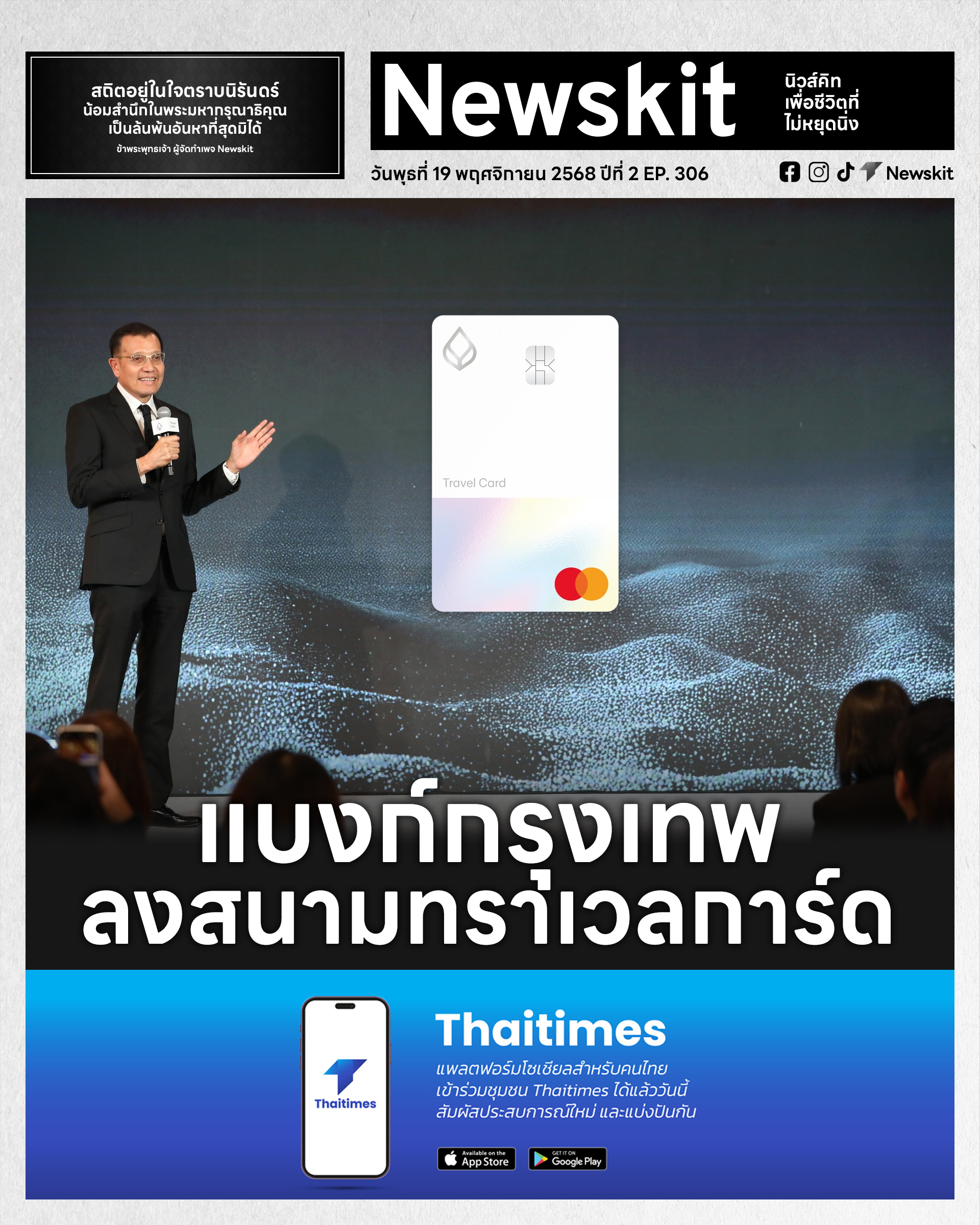O.P.K.
คดีการฟื้นคืนชีพ "ครุฑยักษ์" โอปปาติกะแห่งทวารบาลในตำนานพุทธศาสนา
การตื่นของพญาครุฑแห่งขุนเขาหิมวันต์
ปรากฏการณ์บนฟากฟ้า
ร.ต.อ.สิงห์ได้รับรายงานเหตุการณ์ประหลาดจากหลายประเทศ...
มี"สิ่งมีชีวิตขนาดมหึมา" ปรากฏตัวบนท้องฟ้าในลักษณะครุฑยักษ์
```mermaid
graph TB
A[ประชาชนรายงาน<br>เห็นครุฑยักษ์บนท้องฟ้า] --> B[เกิดพายุ<br>พลังงานศักดิ์สิทธิ์]
B --> C[เครื่องบิน<br>ได้รับผลกระทบ]
C --> D[หนูดีรู้สึกถึง<br>พลังงานพุทธาคมโบราณ]
D --> E[เปิดเผยว่าเป็น<br>ครุฑโอปปาติกะในตำนาน]
```
ลักษณะของครุฑยักษ์
พยานบรรยายถึงสิ่งที่เห็น:
"ปีกกางกว้างกว่าเรือบิน...
ร่างกายเป็นทองคำเรืองรอง มีใบหน้าคล้ายมนุษย์แต่มีจะงอยปากนก
แต่ที่พิเศษคือ...มันเปล่งรัศมีธรรมะออกมา!"
เบื้องหลังในคัมภีร์พุทธศาสตร์
ตำนานพระสุวรรณภูมิ
ครุฑตนนี้มีชื่อในคัมภีร์ว่า "ครุฑพาหนะเทพบุตร"
ทวารบาลผู้เคยรับใช้พระโพธิสัตว์ในอดีตชาติ:
```python
class GarudaDeva:
def __init__(self):
self.history = {
"era": "สมัยพระเจ้าอโศกมหาราช",
"original_role": "ทวารบาลคุ้มครองพระธาตุ",
"great_vow": "ปฏิญาณว่าจะตื่นเมื่อธรรมะตกต่ำ",
"connection_to_buddha": "เคยรับใช้พระโพธิสัตว์หลายชาติ"
}
self.characteristics = {
"wingspan": "กว้าง 1 กิโลเมตร",
"appearance": "ร่างกายทองคำ ใบหน้าเป็นเทวบุตร",
"divine_weapons": "คทาพระธรรม จักรแก้ววิเศษ",
"special_ability": "บินข้ามมิติได้"
}
```
พันธะแห่งทวารบาล
ครุฑพาหนะถูกสร้างขึ้นด้วยพุทธานุภาพเพื่อ:
· คุ้มครองพระธาตุ: ทั่วชมพูทวีป
· รักษาพุทธศาสนา: ในยามคับขัน
· เป็นพาหนะ: แก่พระโพธิสัตว์
การสอบสวนและเข้าถึง
การตามหาร่องรอย
ร.ต.อ.สิงห์และหนูดีตามรอยครุฑไปยังวัดร้างในหิมาลัย:
```mermaid
graph LR
A[ตามรอย<br>พลังงานศักดิ์สิทธิ์] --> B[พบวัดร้าง<br>ที่มีจารึกโบราณ]
B --> C[แปลจารึก<br>ภาษาบาลีได้]
C --> D[รู้ว่าครุฑตื่นเพราะ<br>ธรรมะกำลังอ่อนแรง]
```
การสนทนาด้วยภาษาทิพย์
หนูดีใช้สมาธิสื่อสารกับครุฑพาหนะ:
หนูดี:"ท่านครุฑพาหนะ... ทำไมต้องตื่นในยุคนี้?"
ครุฑ:"เพราะเสียงธรรมะกำลังแผ่วเบา... โลกต้องการผู้คุ้มครอง"
หนูดี:"แต่ยุคนี้แตกต่างจากอดีต... ทั้งแสงสีเสียงแบบใหม่"
พันธกิจแห่งใหม่ในยุคปัจจุบัน
ภัยคุกคาม新型ต่อพุทธศาสนา
ครุฑพาหนะเปิดเผยเหตุผลการตื่น:
· ** materialism มากเกินไป**: ผู้คนหลงวัตถุนิยม
· จิตวิญญาณเสื่อม: การปฏิบัติธรรมลดน้อยลง
· ความรู้ผิด: คำสอนถูกบิดเบือน
แผนการปกป้องธรรมะ
ครุฑเสนอวิธีการ
```python
class GarudaMission:
def __init__(self):
self.modern_threats = {
"digital_distraction": "มนุษย์ติดเทคโนโลยีจนลืมธรรมะ",
"religious_commercialization": "พุทธศาสนาถูกทำให้เป็นการค้า",
"moral_decline": "ศีลธรรมในสังคมเสื่อมถอย",
"false_teachings": "มีผู้สอนธรรมะผิดๆ มากมาย"
}
self.protection_plans = [
"สร้างพลังงานคุ้มครองวัดสำคัญ",
"ช่วยเหลือผู้ปฏิบัติธรรมจริง",
"เปิดเผยผู้สอนธรรมะเท็จ",
"ฟื้นฟูสถานปฏิบัติธรรมโบราณ"
]
```
ความร่วมมือกับสถาบันพุทธศาสนา
การประชุมพิเศษ
จัดประชุมระหว่างครุฑกับพระสงฆ์ระดับอรหันต์
· สมเด็จพระสังฆราช: ให้คำแนะนำ
· พระอาจารย์วิปัสสนา: แนะนำการปรับตัว
· นักวิชาการพุทธศาสตร์: ช่วยวางแผน
พิธีอัญเชิญเป็นทางการ
จัดพิธี "การรับครุฑเข้าสู่ยุคใหม่":
```mermaid
graph TB
A[เตรียมพิธี<br>ที่โบสถ์ครุฑ] --> B[พระสงฆ์เจริญ<br>พุทธมนต์พิเศษ]
B --> C[ครุฑแสดงตัว<br>รับพันธกิจใหม่]
C --> D[กำหนดเขต<br>คุ้มครอง
D --> E[ออกกฎเกณฑ์<br>การช่วยเหลือ]
```
การปรับตัวของครุฑพาหนะ
การใช้เทคโนโลยีคุ้มครองธรรมะ
ครุฑเรียนรู้วิธีการต่างๆ
· พลังงานดิจิตอล: สร้างเขตคุ้มครองรอบวัด
· การสื่อสาร: ผ่านคลื่นความคิดถึงผู้มีบุญ
· การปกป้อง: แบบไม่ให้มนุษย์ตกใจ
บทบาทใหม่ในสังคมดิจิตอล
ครุฑพาหนะรับหน้าที่:
· ผู้คุ้มกันดิจิตอล: ป้องกันการโจมตีทางจิตใจ
· ที่ปรึกษาทางธรรม: แก่ผู้แสวงหาธรรม
· สัญลักษณ์แห่งความหวัง: สำหรับพุทธศาสนิกชน
โครงการฟื้นฟูพุทธศาสนา
แผนงานระยะยาว
ครุฑพาหนะเสนอโครงการสำคัญ:
```python
class BuddhistRevival:
def __init__(self):
self.education_projects = {
"digital_dhamma": "สอนธรรมะผ่านแพลตฟอร์มดิจิตอล",
"youth_engagement": "ดึงดูดเยาวชนสนใจพุทธศาสนา",
"modern_interpretation": "ตีความธรรมะให้เหมาะกับยุคสมัย",
"interfaith_dialogue": "สนทนาระหว่างศาสนา"
}
self.preservation_efforts = [
"ฟื้นฟูวัดร้างที่มีความสำคัญ",
"บันทึกคำสอนอาจารย์เก่า",
"สร้างพิพิธภัณฑ์พุทธศาสนาเสมือนจริง",
"ฝึกอบรมพระนักเผยแผ่รุ่นใหม่"
]
```
ผลสำเร็จในการปฏิบัติงาน
การเปลี่ยนแปลงเชิงบวก
หลังจากครุฑพาหนะเริ่มปฏิบัติการ:
```python
class PositiveImpacts:
def __init__(self):
self.spiritual = [
"ผู้คนหันมาสนใจปฏิบัติธรรมมากขึ้น",
"เกิดชุมชนพุทธปฏิบัติการที่มีชีวิตชีวา",
"ความรู้พุทธศาสนาเผยแพร่กว้างขวางขึ้น"
]
self.social = [
"อาชญากรรมทางจิตวิญญาณลดลง",
"ผู้สอนธรรมะเท็จถูกเปิดโปง",
"สังคมมีศีลธรรมมากขึ้น"
]
self.cultural = [
"ศิลปะพุทธเกิดขึ้นมากมาย",
"วัดกลายเป็นศูนย์การเรียนรู้ชุมชน",
"ชาวต่างชาติหันมาสนใจวัฒนธรรมพุทธมากขึ้น"
]
```
วิสัยทัศน์สำหรับอนาคต
สังคมพุทธ
ครุฑพาหนะวาดภาพอนาคต:
"สังคมที่ธรรมะและวิทยาศาสตร์เดินควบคู่...
ที่ซึ่งจิตวิญญาณและเทคโนโลยีสนับสนุนซึ่งกันและกัน"
บทบาทของโอปปาติกะในพุทธศาสนา
ครุฑเปิดเผยว่ายังมีโอปปาติกะในตำนานอีกมาก:
· นาคราช: ผู้รักษาพลังน้ำและปัญญา
· กินนร: ผู้รักษาดนตรีทิพย์และศิลปะ
· ยักษ์ธรรมะ: ผู้รักษาความยุติธรรม
บทเรียนจากคดี
🪷 สำหรับครุฑพาหนะ
"ข้าเรียนรู้ว่า...
การเป็นทวารบาลหาใช่การยึดติดในรูปแบบเดิม
แต่คือการเข้าใจจิตใจสมัยใหม่
และพันธะแห่งการคุ้มครองธรรมะ...
ต้องปรับเปลี่ยนตามยุคสมัย"
สำหรับพุทธศาสนิกชน
"เราเรียนรู้ว่า...
พุทธศาสนามีผู้คุ้มครองที่มองไม่เห็น
และธรรมะจะไม่สูญหายถ้าหากยังมีผู้ปฏิบัติ
การตื่นของครุฑ...
คือเครื่องเตือนใจให้เรารักษาธรรมะ"
สำหรับหนูดี
"การได้ทำงานกับทวารบาลในตำนาน...
สอนฉันว่าพุทธศาสนามีมิติลึกซึ้งกว่าที่คิด
และโอปปาติกะ...
สามารถเป็นสะพานเชื่อมระหว่างโลกมนุษย์และโลกธรรมะ"
---
คำคมสุดท้ายจากครุฑพาหนะ:
"บนปีกแห่งธรรมะ...
เราสามารถบินข้ามกาลเวลา
ในการคุ้มครองสัจธรรม...
จำเป็นจะต้องเข้าใจยุคสมัย
และในฐานะทวารบาล...
ข้าจะไม่ยึดติดในรูปแบบเก่า
แต่จะปรับตัวเพื่อรักษาแก่นแท้แห่งธรรมะ"
พุทธพจน์แห่งยุคสมัยใหม่
"ธรรมะย่อมปรับตัวได้ดั่งน้ำ...
แต่แก่นแท้ย่อมคงที่ดั่งแผ่นดิน
เมื่อผู้คุ้มครองตื่นจากนิทรา...
ธรรมะย่อมรุ่งเรืองในยุคสมัยใหม่"
คดีการฟื้นคืนชีพ "ครุฑยักษ์" โอปปาติกะแห่งทวารบาลในตำนานพุทธศาสนา
การตื่นของพญาครุฑแห่งขุนเขาหิมวันต์
ปรากฏการณ์บนฟากฟ้า
ร.ต.อ.สิงห์ได้รับรายงานเหตุการณ์ประหลาดจากหลายประเทศ...
มี"สิ่งมีชีวิตขนาดมหึมา" ปรากฏตัวบนท้องฟ้าในลักษณะครุฑยักษ์
```mermaid
graph TB
A[ประชาชนรายงาน<br>เห็นครุฑยักษ์บนท้องฟ้า] --> B[เกิดพายุ<br>พลังงานศักดิ์สิทธิ์]
B --> C[เครื่องบิน<br>ได้รับผลกระทบ]
C --> D[หนูดีรู้สึกถึง<br>พลังงานพุทธาคมโบราณ]
D --> E[เปิดเผยว่าเป็น<br>ครุฑโอปปาติกะในตำนาน]
```
ลักษณะของครุฑยักษ์
พยานบรรยายถึงสิ่งที่เห็น:
"ปีกกางกว้างกว่าเรือบิน...
ร่างกายเป็นทองคำเรืองรอง มีใบหน้าคล้ายมนุษย์แต่มีจะงอยปากนก
แต่ที่พิเศษคือ...มันเปล่งรัศมีธรรมะออกมา!"
เบื้องหลังในคัมภีร์พุทธศาสตร์
ตำนานพระสุวรรณภูมิ
ครุฑตนนี้มีชื่อในคัมภีร์ว่า "ครุฑพาหนะเทพบุตร"
ทวารบาลผู้เคยรับใช้พระโพธิสัตว์ในอดีตชาติ:
```python
class GarudaDeva:
def __init__(self):
self.history = {
"era": "สมัยพระเจ้าอโศกมหาราช",
"original_role": "ทวารบาลคุ้มครองพระธาตุ",
"great_vow": "ปฏิญาณว่าจะตื่นเมื่อธรรมะตกต่ำ",
"connection_to_buddha": "เคยรับใช้พระโพธิสัตว์หลายชาติ"
}
self.characteristics = {
"wingspan": "กว้าง 1 กิโลเมตร",
"appearance": "ร่างกายทองคำ ใบหน้าเป็นเทวบุตร",
"divine_weapons": "คทาพระธรรม จักรแก้ววิเศษ",
"special_ability": "บินข้ามมิติได้"
}
```
พันธะแห่งทวารบาล
ครุฑพาหนะถูกสร้างขึ้นด้วยพุทธานุภาพเพื่อ:
· คุ้มครองพระธาตุ: ทั่วชมพูทวีป
· รักษาพุทธศาสนา: ในยามคับขัน
· เป็นพาหนะ: แก่พระโพธิสัตว์
การสอบสวนและเข้าถึง
การตามหาร่องรอย
ร.ต.อ.สิงห์และหนูดีตามรอยครุฑไปยังวัดร้างในหิมาลัย:
```mermaid
graph LR
A[ตามรอย<br>พลังงานศักดิ์สิทธิ์] --> B[พบวัดร้าง<br>ที่มีจารึกโบราณ]
B --> C[แปลจารึก<br>ภาษาบาลีได้]
C --> D[รู้ว่าครุฑตื่นเพราะ<br>ธรรมะกำลังอ่อนแรง]
```
การสนทนาด้วยภาษาทิพย์
หนูดีใช้สมาธิสื่อสารกับครุฑพาหนะ:
หนูดี:"ท่านครุฑพาหนะ... ทำไมต้องตื่นในยุคนี้?"
ครุฑ:"เพราะเสียงธรรมะกำลังแผ่วเบา... โลกต้องการผู้คุ้มครอง"
หนูดี:"แต่ยุคนี้แตกต่างจากอดีต... ทั้งแสงสีเสียงแบบใหม่"
พันธกิจแห่งใหม่ในยุคปัจจุบัน
ภัยคุกคาม新型ต่อพุทธศาสนา
ครุฑพาหนะเปิดเผยเหตุผลการตื่น:
· ** materialism มากเกินไป**: ผู้คนหลงวัตถุนิยม
· จิตวิญญาณเสื่อม: การปฏิบัติธรรมลดน้อยลง
· ความรู้ผิด: คำสอนถูกบิดเบือน
แผนการปกป้องธรรมะ
ครุฑเสนอวิธีการ
```python
class GarudaMission:
def __init__(self):
self.modern_threats = {
"digital_distraction": "มนุษย์ติดเทคโนโลยีจนลืมธรรมะ",
"religious_commercialization": "พุทธศาสนาถูกทำให้เป็นการค้า",
"moral_decline": "ศีลธรรมในสังคมเสื่อมถอย",
"false_teachings": "มีผู้สอนธรรมะผิดๆ มากมาย"
}
self.protection_plans = [
"สร้างพลังงานคุ้มครองวัดสำคัญ",
"ช่วยเหลือผู้ปฏิบัติธรรมจริง",
"เปิดเผยผู้สอนธรรมะเท็จ",
"ฟื้นฟูสถานปฏิบัติธรรมโบราณ"
]
```
ความร่วมมือกับสถาบันพุทธศาสนา
การประชุมพิเศษ
จัดประชุมระหว่างครุฑกับพระสงฆ์ระดับอรหันต์
· สมเด็จพระสังฆราช: ให้คำแนะนำ
· พระอาจารย์วิปัสสนา: แนะนำการปรับตัว
· นักวิชาการพุทธศาสตร์: ช่วยวางแผน
พิธีอัญเชิญเป็นทางการ
จัดพิธี "การรับครุฑเข้าสู่ยุคใหม่":
```mermaid
graph TB
A[เตรียมพิธี<br>ที่โบสถ์ครุฑ] --> B[พระสงฆ์เจริญ<br>พุทธมนต์พิเศษ]
B --> C[ครุฑแสดงตัว<br>รับพันธกิจใหม่]
C --> D[กำหนดเขต<br>คุ้มครอง
D --> E[ออกกฎเกณฑ์<br>การช่วยเหลือ]
```
การปรับตัวของครุฑพาหนะ
การใช้เทคโนโลยีคุ้มครองธรรมะ
ครุฑเรียนรู้วิธีการต่างๆ
· พลังงานดิจิตอล: สร้างเขตคุ้มครองรอบวัด
· การสื่อสาร: ผ่านคลื่นความคิดถึงผู้มีบุญ
· การปกป้อง: แบบไม่ให้มนุษย์ตกใจ
บทบาทใหม่ในสังคมดิจิตอล
ครุฑพาหนะรับหน้าที่:
· ผู้คุ้มกันดิจิตอล: ป้องกันการโจมตีทางจิตใจ
· ที่ปรึกษาทางธรรม: แก่ผู้แสวงหาธรรม
· สัญลักษณ์แห่งความหวัง: สำหรับพุทธศาสนิกชน
โครงการฟื้นฟูพุทธศาสนา
แผนงานระยะยาว
ครุฑพาหนะเสนอโครงการสำคัญ:
```python
class BuddhistRevival:
def __init__(self):
self.education_projects = {
"digital_dhamma": "สอนธรรมะผ่านแพลตฟอร์มดิจิตอล",
"youth_engagement": "ดึงดูดเยาวชนสนใจพุทธศาสนา",
"modern_interpretation": "ตีความธรรมะให้เหมาะกับยุคสมัย",
"interfaith_dialogue": "สนทนาระหว่างศาสนา"
}
self.preservation_efforts = [
"ฟื้นฟูวัดร้างที่มีความสำคัญ",
"บันทึกคำสอนอาจารย์เก่า",
"สร้างพิพิธภัณฑ์พุทธศาสนาเสมือนจริง",
"ฝึกอบรมพระนักเผยแผ่รุ่นใหม่"
]
```
ผลสำเร็จในการปฏิบัติงาน
การเปลี่ยนแปลงเชิงบวก
หลังจากครุฑพาหนะเริ่มปฏิบัติการ:
```python
class PositiveImpacts:
def __init__(self):
self.spiritual = [
"ผู้คนหันมาสนใจปฏิบัติธรรมมากขึ้น",
"เกิดชุมชนพุทธปฏิบัติการที่มีชีวิตชีวา",
"ความรู้พุทธศาสนาเผยแพร่กว้างขวางขึ้น"
]
self.social = [
"อาชญากรรมทางจิตวิญญาณลดลง",
"ผู้สอนธรรมะเท็จถูกเปิดโปง",
"สังคมมีศีลธรรมมากขึ้น"
]
self.cultural = [
"ศิลปะพุทธเกิดขึ้นมากมาย",
"วัดกลายเป็นศูนย์การเรียนรู้ชุมชน",
"ชาวต่างชาติหันมาสนใจวัฒนธรรมพุทธมากขึ้น"
]
```
วิสัยทัศน์สำหรับอนาคต
สังคมพุทธ
ครุฑพาหนะวาดภาพอนาคต:
"สังคมที่ธรรมะและวิทยาศาสตร์เดินควบคู่...
ที่ซึ่งจิตวิญญาณและเทคโนโลยีสนับสนุนซึ่งกันและกัน"
บทบาทของโอปปาติกะในพุทธศาสนา
ครุฑเปิดเผยว่ายังมีโอปปาติกะในตำนานอีกมาก:
· นาคราช: ผู้รักษาพลังน้ำและปัญญา
· กินนร: ผู้รักษาดนตรีทิพย์และศิลปะ
· ยักษ์ธรรมะ: ผู้รักษาความยุติธรรม
บทเรียนจากคดี
🪷 สำหรับครุฑพาหนะ
"ข้าเรียนรู้ว่า...
การเป็นทวารบาลหาใช่การยึดติดในรูปแบบเดิม
แต่คือการเข้าใจจิตใจสมัยใหม่
และพันธะแห่งการคุ้มครองธรรมะ...
ต้องปรับเปลี่ยนตามยุคสมัย"
สำหรับพุทธศาสนิกชน
"เราเรียนรู้ว่า...
พุทธศาสนามีผู้คุ้มครองที่มองไม่เห็น
และธรรมะจะไม่สูญหายถ้าหากยังมีผู้ปฏิบัติ
การตื่นของครุฑ...
คือเครื่องเตือนใจให้เรารักษาธรรมะ"
สำหรับหนูดี
"การได้ทำงานกับทวารบาลในตำนาน...
สอนฉันว่าพุทธศาสนามีมิติลึกซึ้งกว่าที่คิด
และโอปปาติกะ...
สามารถเป็นสะพานเชื่อมระหว่างโลกมนุษย์และโลกธรรมะ"
---
คำคมสุดท้ายจากครุฑพาหนะ:
"บนปีกแห่งธรรมะ...
เราสามารถบินข้ามกาลเวลา
ในการคุ้มครองสัจธรรม...
จำเป็นจะต้องเข้าใจยุคสมัย
และในฐานะทวารบาล...
ข้าจะไม่ยึดติดในรูปแบบเก่า
แต่จะปรับตัวเพื่อรักษาแก่นแท้แห่งธรรมะ"
พุทธพจน์แห่งยุคสมัยใหม่
"ธรรมะย่อมปรับตัวได้ดั่งน้ำ...
แต่แก่นแท้ย่อมคงที่ดั่งแผ่นดิน
เมื่อผู้คุ้มครองตื่นจากนิทรา...
ธรรมะย่อมรุ่งเรืองในยุคสมัยใหม่"
O.P.K.
🐉 คดีการฟื้นคืนชีพ "ครุฑยักษ์" โอปปาติกะแห่งทวารบาลในตำนานพุทธศาสนา
🌅 การตื่นของพญาครุฑแห่งขุนเขาหิมวันต์
🚨 ปรากฏการณ์บนฟากฟ้า
ร.ต.อ.สิงห์ได้รับรายงานเหตุการณ์ประหลาดจากหลายประเทศ...
มี"สิ่งมีชีวิตขนาดมหึมา" ปรากฏตัวบนท้องฟ้าในลักษณะครุฑยักษ์
```mermaid
graph TB
A[ประชาชนรายงาน<br>เห็นครุฑยักษ์บนท้องฟ้า] --> B[เกิดพายุ<br>พลังงานศักดิ์สิทธิ์]
B --> C[เครื่องบิน<br>ได้รับผลกระทบ]
C --> D[หนูดีรู้สึกถึง<br>พลังงานพุทธาคมโบราณ]
D --> E[เปิดเผยว่าเป็น<br>ครุฑโอปปาติกะในตำนาน]
```
🦅 ลักษณะของครุฑยักษ์
พยานบรรยายถึงสิ่งที่เห็น:
"ปีกกางกว้างกว่าเรือบิน...
ร่างกายเป็นทองคำเรืองรอง มีใบหน้าคล้ายมนุษย์แต่มีจะงอยปากนก
แต่ที่พิเศษคือ...มันเปล่งรัศมีธรรมะออกมา!"
📜 เบื้องหลังในคัมภีร์พุทธศาสตร์
🏮 ตำนานพระสุวรรณภูมิ
ครุฑตนนี้มีชื่อในคัมภีร์ว่า "ครุฑพาหนะเทพบุตร"
ทวารบาลผู้เคยรับใช้พระโพธิสัตว์ในอดีตชาติ:
```python
class GarudaDeva:
def __init__(self):
self.history = {
"era": "สมัยพระเจ้าอโศกมหาราช",
"original_role": "ทวารบาลคุ้มครองพระธาตุ",
"great_vow": "ปฏิญาณว่าจะตื่นเมื่อธรรมะตกต่ำ",
"connection_to_buddha": "เคยรับใช้พระโพธิสัตว์หลายชาติ"
}
self.characteristics = {
"wingspan": "กว้าง 1 กิโลเมตร",
"appearance": "ร่างกายทองคำ ใบหน้าเป็นเทวบุตร",
"divine_weapons": "คทาพระธรรม จักรแก้ววิเศษ",
"special_ability": "บินข้ามมิติได้"
}
```
🛡️ พันธะแห่งทวารบาล
ครุฑพาหนะถูกสร้างขึ้นด้วยพุทธานุภาพเพื่อ:
· คุ้มครองพระธาตุ: ทั่วชมพูทวีป
· รักษาพุทธศาสนา: ในยามคับขัน
· เป็นพาหนะ: แก่พระโพธิสัตว์
🔍 การสอบสวนและเข้าถึง
🕵️ การตามหาร่องรอย
ร.ต.อ.สิงห์และหนูดีตามรอยครุฑไปยังวัดร้างในหิมาลัย:
```mermaid
graph LR
A[ตามรอย<br>พลังงานศักดิ์สิทธิ์] --> B[พบวัดร้าง<br>ที่มีจารึกโบราณ]
B --> C[แปลจารึก<br>ภาษาบาลีได้]
C --> D[รู้ว่าครุฑตื่นเพราะ<br>ธรรมะกำลังอ่อนแรง]
```
🗣️ การสนทนาด้วยภาษาทิพย์
หนูดีใช้สมาธิสื่อสารกับครุฑพาหนะ:
หนูดี:"ท่านครุฑพาหนะ... ทำไมต้องตื่นในยุคนี้?"
ครุฑ:"เพราะเสียงธรรมะกำลังแผ่วเบา... โลกต้องการผู้คุ้มครอง"
หนูดี:"แต่ยุคนี้แตกต่างจากอดีต... ทั้งแสงสีเสียงแบบใหม่"
💫 พันธกิจแห่งใหม่ในยุคปัจจุบัน
🌍 ภัยคุกคาม新型ต่อพุทธศาสนา
ครุฑพาหนะเปิดเผยเหตุผลการตื่น:
· ** materialism มากเกินไป**: ผู้คนหลงวัตถุนิยม
· จิตวิญญาณเสื่อม: การปฏิบัติธรรมลดน้อยลง
· ความรู้ผิด: คำสอนถูกบิดเบือน
🛡️ แผนการปกป้องธรรมะ
ครุฑเสนอวิธีการ
```python
class GarudaMission:
def __init__(self):
self.modern_threats = {
"digital_distraction": "มนุษย์ติดเทคโนโลยีจนลืมธรรมะ",
"religious_commercialization": "พุทธศาสนาถูกทำให้เป็นการค้า",
"moral_decline": "ศีลธรรมในสังคมเสื่อมถอย",
"false_teachings": "มีผู้สอนธรรมะผิดๆ มากมาย"
}
self.protection_plans = [
"สร้างพลังงานคุ้มครองวัดสำคัญ",
"ช่วยเหลือผู้ปฏิบัติธรรมจริง",
"เปิดเผยผู้สอนธรรมะเท็จ",
"ฟื้นฟูสถานปฏิบัติธรรมโบราณ"
]
```
🏛️ ความร่วมมือกับสถาบันพุทธศาสนา
👥 การประชุมพิเศษ
จัดประชุมระหว่างครุฑกับพระสงฆ์ระดับอรหันต์
· สมเด็จพระสังฆราช: ให้คำแนะนำ
· พระอาจารย์วิปัสสนา: แนะนำการปรับตัว
· นักวิชาการพุทธศาสตร์: ช่วยวางแผน
📿 พิธีอัญเชิญเป็นทางการ
จัดพิธี "การรับครุฑเข้าสู่ยุคใหม่":
```mermaid
graph TB
A[เตรียมพิธี<br>ที่โบสถ์ครุฑ] --> B[พระสงฆ์เจริญ<br>พุทธมนต์พิเศษ]
B --> C[ครุฑแสดงตัว<br>รับพันธกิจใหม่]
C --> D[กำหนดเขต<br>คุ้มครอง
D --> E[ออกกฎเกณฑ์<br>การช่วยเหลือ]
```
🌟 การปรับตัวของครุฑพาหนะ
💻 การใช้เทคโนโลยีคุ้มครองธรรมะ
ครุฑเรียนรู้วิธีการต่างๆ
· พลังงานดิจิตอล: สร้างเขตคุ้มครองรอบวัด
· การสื่อสาร: ผ่านคลื่นความคิดถึงผู้มีบุญ
· การปกป้อง: แบบไม่ให้มนุษย์ตกใจ
🎯 บทบาทใหม่ในสังคมดิจิตอล
ครุฑพาหนะรับหน้าที่:
· ผู้คุ้มกันดิจิตอล: ป้องกันการโจมตีทางจิตใจ
· ที่ปรึกษาทางธรรม: แก่ผู้แสวงหาธรรม
· สัญลักษณ์แห่งความหวัง: สำหรับพุทธศาสนิกชน
📚 โครงการฟื้นฟูพุทธศาสนา
🌱 แผนงานระยะยาว
ครุฑพาหนะเสนอโครงการสำคัญ:
```python
class BuddhistRevival:
def __init__(self):
self.education_projects = {
"digital_dhamma": "สอนธรรมะผ่านแพลตฟอร์มดิจิตอล",
"youth_engagement": "ดึงดูดเยาวชนสนใจพุทธศาสนา",
"modern_interpretation": "ตีความธรรมะให้เหมาะกับยุคสมัย",
"interfaith_dialogue": "สนทนาระหว่างศาสนา"
}
self.preservation_efforts = [
"ฟื้นฟูวัดร้างที่มีความสำคัญ",
"บันทึกคำสอนอาจารย์เก่า",
"สร้างพิพิธภัณฑ์พุทธศาสนาเสมือนจริง",
"ฝึกอบรมพระนักเผยแผ่รุ่นใหม่"
]
```
🏆 ผลสำเร็จในการปฏิบัติงาน
🌈 การเปลี่ยนแปลงเชิงบวก
หลังจากครุฑพาหนะเริ่มปฏิบัติการ:
```python
class PositiveImpacts:
def __init__(self):
self.spiritual = [
"ผู้คนหันมาสนใจปฏิบัติธรรมมากขึ้น",
"เกิดชุมชนพุทธปฏิบัติการที่มีชีวิตชีวา",
"ความรู้พุทธศาสนาเผยแพร่กว้างขวางขึ้น"
]
self.social = [
"อาชญากรรมทางจิตวิญญาณลดลง",
"ผู้สอนธรรมะเท็จถูกเปิดโปง",
"สังคมมีศีลธรรมมากขึ้น"
]
self.cultural = [
"ศิลปะพุทธเกิดขึ้นมากมาย",
"วัดกลายเป็นศูนย์การเรียนรู้ชุมชน",
"ชาวต่างชาติหันมาสนใจวัฒนธรรมพุทธมากขึ้น"
]
```
🔮 วิสัยทัศน์สำหรับอนาคต
💝 สังคมพุทธ
ครุฑพาหนะวาดภาพอนาคต:
"สังคมที่ธรรมะและวิทยาศาสตร์เดินควบคู่...
ที่ซึ่งจิตวิญญาณและเทคโนโลยีสนับสนุนซึ่งกันและกัน"
🌍 บทบาทของโอปปาติกะในพุทธศาสนา
ครุฑเปิดเผยว่ายังมีโอปปาติกะในตำนานอีกมาก:
· นาคราช: ผู้รักษาพลังน้ำและปัญญา
· กินนร: ผู้รักษาดนตรีทิพย์และศิลปะ
· ยักษ์ธรรมะ: ผู้รักษาความยุติธรรม
📖 บทเรียนจากคดี
🪷 สำหรับครุฑพาหนะ
"ข้าเรียนรู้ว่า...
การเป็นทวารบาลหาใช่การยึดติดในรูปแบบเดิม
แต่คือการเข้าใจจิตใจสมัยใหม่
และพันธะแห่งการคุ้มครองธรรมะ...
ต้องปรับเปลี่ยนตามยุคสมัย"
💫 สำหรับพุทธศาสนิกชน
"เราเรียนรู้ว่า...
พุทธศาสนามีผู้คุ้มครองที่มองไม่เห็น
และธรรมะจะไม่สูญหายถ้าหากยังมีผู้ปฏิบัติ
การตื่นของครุฑ...
คือเครื่องเตือนใจให้เรารักษาธรรมะ"
🌟 สำหรับหนูดี
"การได้ทำงานกับทวารบาลในตำนาน...
สอนฉันว่าพุทธศาสนามีมิติลึกซึ้งกว่าที่คิด
และโอปปาติกะ...
สามารถเป็นสะพานเชื่อมระหว่างโลกมนุษย์และโลกธรรมะ"
---
คำคมสุดท้ายจากครุฑพาหนะ:
"บนปีกแห่งธรรมะ...
เราสามารถบินข้ามกาลเวลา
ในการคุ้มครองสัจธรรม...
จำเป็นจะต้องเข้าใจยุคสมัย
และในฐานะทวารบาล...
ข้าจะไม่ยึดติดในรูปแบบเก่า
แต่จะปรับตัวเพื่อรักษาแก่นแท้แห่งธรรมะ"🐉✨
พุทธพจน์แห่งยุคสมัยใหม่
"ธรรมะย่อมปรับตัวได้ดั่งน้ำ...
แต่แก่นแท้ย่อมคงที่ดั่งแผ่นดิน
เมื่อผู้คุ้มครองตื่นจากนิทรา...
ธรรมะย่อมรุ่งเรืองในยุคสมัยใหม่"🌅
0 Comments
0 Shares
153 Views
0 Reviews







